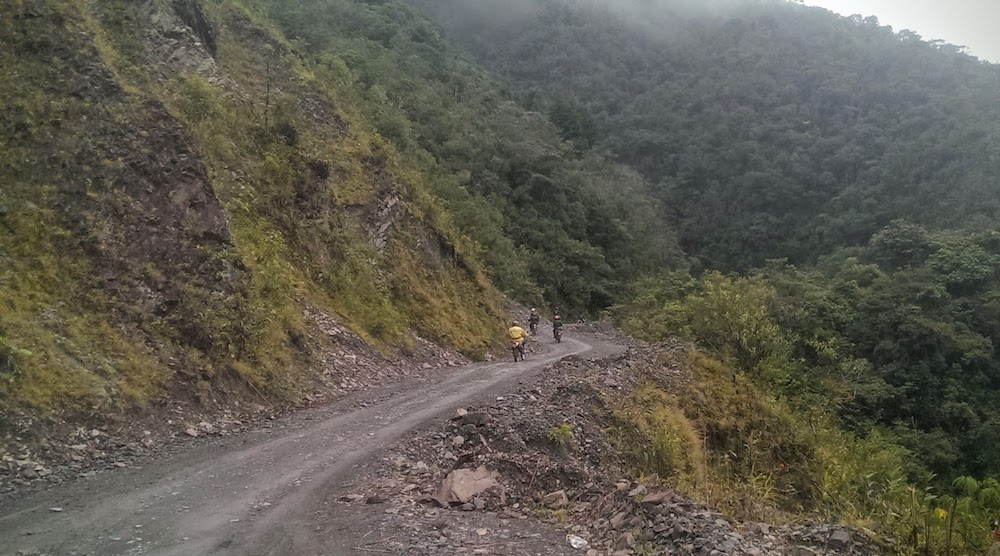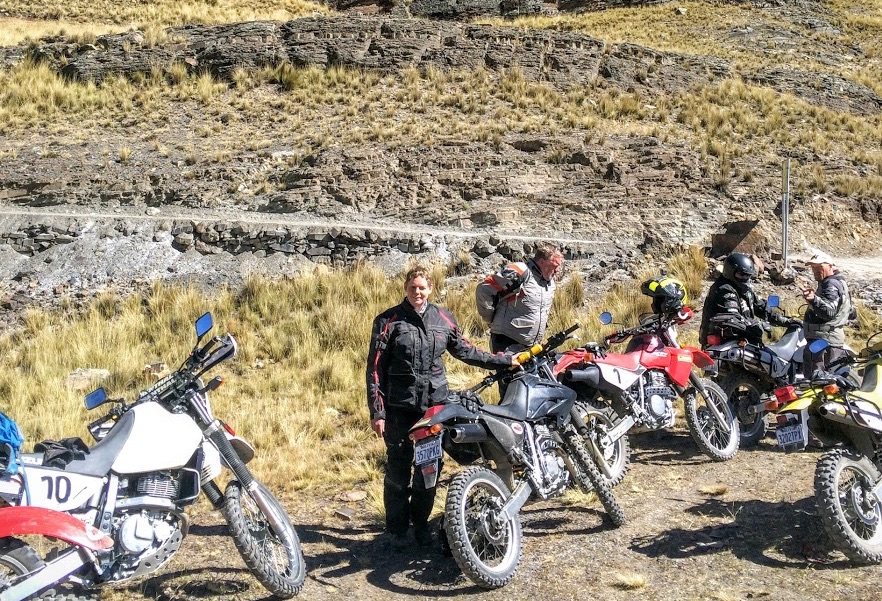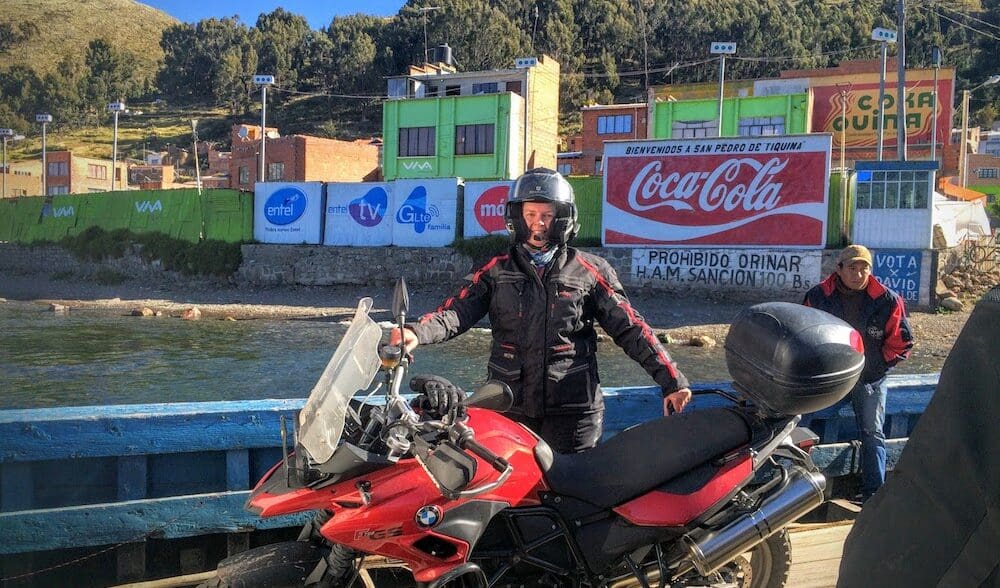Yvonne Everett has been riding motorcycles since she was 16, but recently went back to bike school to sharpen her dirt skills so she could ride the Bolivian Death Road. Here’s her story.
I’m spinning my wheels in the dirt and splashing through muddy puddles at the HART (Honda Australia Rider Training) facility north of Sydney.
We are at HART to participate in a small group, three hour off-road motorcycle training course. After introducing himself, our instructor opens with “Why are you here?” Good question. It’s a sweltering hot day and I’m sweating from anxiety in my bulky and totally inappropriate road biking gear.
“I’m planning to ride Death Road, Bolivia and survive” I reply. “I have no off road experience”. The instructor doesn’t blink, perhaps he hears this from a 50-year-old woman every weekend.

A Honda 230cc, rented from HART, is waiting for me outside. I learnt to ride as a teenager on a motorbike borrowed from my elder brother, and currently ride a Suzuki VStrom. It quickly becomes apparent that this dirt bike is nothing like my smooth road bike. It’s lighter, taller with big knobbly tires and wide handlebars.
I’m shown how to stand up on the pegs and get my arms into “attack” position for better control. I give it a go riding in circles around a lumpy paddock. Standing feels weird, and is tiring on the muscles, so I’m grateful when the instructor demonstrates cornering while seated. Sit forward, right leg hard on the peg read to brake and providing downward stability, left leg reaching forward with foot aligned with the wheel hub as a gauge. Accelerate into the corner and roll off the throttle as you exit. Push down on handle bars to turn, don’t lean as with a road bike. Too easy.
Everything feels wrong. I’m nervous, too scared to stamp on the brake or to accelerate hard. Even though the bike is an easy comfortable ride, it’s hard to shake the heavy road bike habits. I know I’d learn faster if I pushed myself beyond my limitations, but I stay cautiously within them, frustrating those behind me with my slow laps.
We move out the paddock to the Enduro course. The instructor, Lou, walks us around the course and discusses the grip of clay surface. He tells us how to tackle branches or roots straight on, and how to have a loose hold to allow some movement in the front wheel when we go through sections with large gravel. We inspect two hair pin bends – a wide, cambered corner and a tight rutted corner – and discuss the line and approaches for each.
Having walked the course, we now ride it. I go last and work up the courage to flick up to second gear, open the throttle and spin the back wheel in the tight corners. I have to remember to keep my head up and eyes focussed far ahead
As a road biker, I am well trained to look at the exit of the bends, but on a dirt track it is hard not to fixate on the rut or obstacle at your feet. There’s a life lesson in there, but I’m a slow learner even though I constantly talk to myself to reinforce the point.
Dirt biking takes concentration and strength. We take a short drink break to rest. Our instructor uses a straight flat section of dirt to show us how to do wheelies. It’s very hard to break ingrained habits, wheelies carry a 3 demerit point fine on the road. But here, on track within the HART training area, I’m being encouraged to rev three times and let out the clutch.
Next we’re being introduced to ramps, or “whoop whoops” as Lou the instructor calls them, as that’s the noise the engine makes as the rider accelerates, eases off as she gets air, then accelerates again for traction when she hits the dirt. Once again I’m last and quickly separated from the group. After a few wrong turns on the enduro track, I find myself going down rocky steps and through long deep puddles. But to my surprise, I make it and re-join the group.
Once we’re nicely covered in mud and deemed to be competent ramp jumpers and puddle splashers, Lou introduces us to a steep rocky ascent and descent. He tells me it’s optional. I quickly take the option of going around, but the others in my group all attempt the climb and, after a few initial stalls and tumbles, they all master it.
Finally it’s back to base, to strip off our gear and get out the water gurney to clean the mud off our bikes and clothing. There is lots of mud! We have all got big happy smiles on our faces. HART have an excellent facility with instructors who explain the actions well, demonstrate them with ease, and give helpful feedback. I am feeling pumped to take on Death Road in Bolivia.
See her on the Death Road here.

- Tell us your travel story! Send details and photographs to us at mark@webbikeworld.com.


